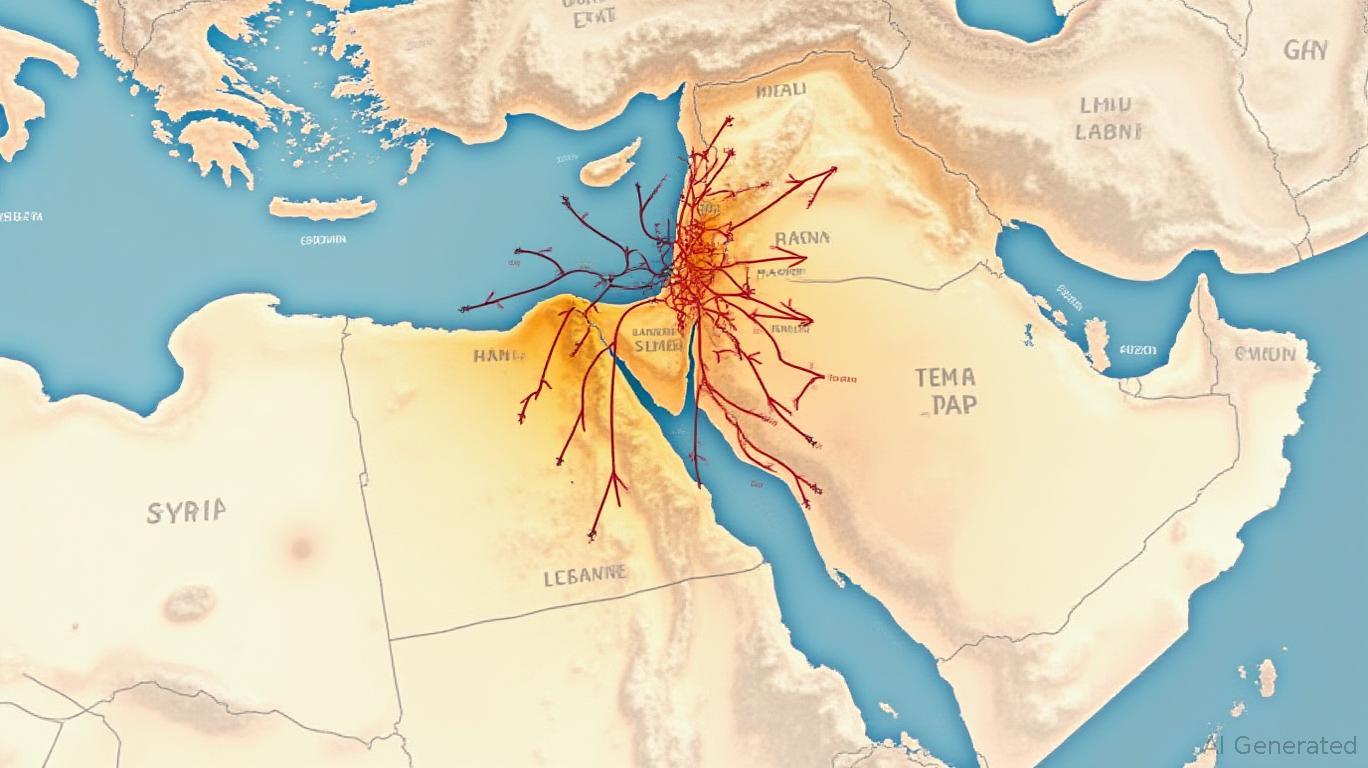Week Ahead for FX and Bonds: Navigating Fed Crossroads and Middle East Tensions
The Federal Reserve's June meeting and escalating Middle East tensions are set to dominate global markets this week, creating a critical juncture for investors. While the Fed is expected to hold rates steady, its forward guidance on future cuts will shape currency and bond dynamics, while geopolitical risks in the Middle East could amplify demand for safe-haven assets. Here's how to position portfolios amid these crosscurrents.
1. Fed Policy: A Hold, But the Path Forward Matters
The Federal Open Market Committee (FOMC) is widely anticipated to keep the federal funds rate at 4.25%-4.50% on June 18, as policymakers balance cooling inflation with lingering tariff-related risks. However, the statement's tone and updated Summary of Economic Projections (SEP) will be key.
The CME FedWatch Tool shows a 60% probability of a September rate cut, with an 88% chance of at least two reductions by year-end (). This reflects market expectations of easing, but the Fed's caution on inflation—core PCE is projected at 2.8% for 2025—could delay action if data deteriorates.
USD Dynamics: A hold decision may weaken the dollar if the Fed signals a July cut, but geopolitical risks could bolster USD as a safe haven. Emerging market currencies, already pressured by USD strength, face a dual threat: Fed uncertainty and commodity volatility from Middle East conflicts.
2. Middle East Tensions: Geopolitical Risks and Safe-Haven Flows
The region remains a tinderbox, with escalating conflicts in Gaza, Lebanon, and Yemen. Israeli operations in Gaza, Turkish-Iraqi tensions over the PKK, and Iran's nuclear brinkmanship all risk disrupting oil flows and amplifying global uncertainty.

Bond Market Impact: Geopolitical flare-ups typically boost demand for US Treasuries. A 47% surge in Israeli strikes on Hezbollah in May and Iran's retaliation for recent Israeli strikes have already driven 10-year Treasury yields down by 20 bps in June (). However, sustained conflict could push oil prices higher, complicating the Fed's inflation outlook and creating a tug-of-war between safe-haven demand and inflation fears.
3. Strategic Investment Actions
FX: Balance Safe-Haven Plays with Carry Opportunities
- Overweight USD/JPY and USD/CHF: These pairs may benefit from flight-to-safety flows amid Middle East volatility.
- Underweight EMFX: Emerging market currencies (e.g., BRL, INR) are vulnerable to Fed uncertainty and commodity price swings. Use hedging tools like currency forwards to mitigate losses.
Bonds: Short-Term Duration, Target High-Yield Sectors
- Short-Term Treasuries: Favor 2- to 5-year maturities to capture safe-haven inflows while avoiding long-dated bonds exposed to inflation risks.
- US Corporate High-Yield Bonds: Select issuers with strong balance sheets and low duration (e.g., consumer staples or utilities) to capitalize on yield spreads. Avoid energy sectors tied to oil price volatility.
- Emerging Market Debt (EMD): Stick to hard-currency sovereign bonds with strong fundamentals (e.g., Mexico, Poland) and avoid local currency exposure due to USD strength.
Oil and Geopolitical Hedging
- Long Brent Crude Options: With supply risks elevated, a straddle (call + put) could profit from price swings.
- Dividend Stocks: Defensive sectors like healthcare and utilities offer steady income amid volatility.
4. Risks to Watch
- Fed Hawks vs. Doves: If the FOMC signals a delay in cuts beyond September, USD could rebound sharply.
- Middle East Escalation: A full-scale Iran-Israel war would spike oil prices and disrupt global supply chains.
- Tariff Policy: New US trade measures could reignite inflation fears, pressuring the Fed to stay restrictive.
Final Take
This week's Fed meeting and Middle East developments will test investors' ability to balance safe-haven demand with yield-seeking opportunities. Positioning for short-term Treasuries, hedged EMFX exposure, and high-quality corporate bonds offers a pragmatic path. Monitor oil prices and Fed communication closely—both will define the next phase of market volatility.
Investors who stay agile, diversify across asset classes, and hedge geopolitical risks will be best placed to navigate these turbulent waters.

Comments
No comments yet